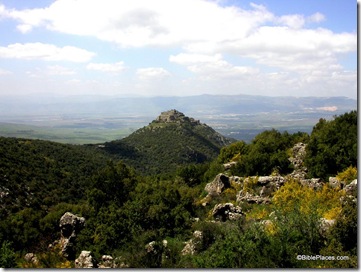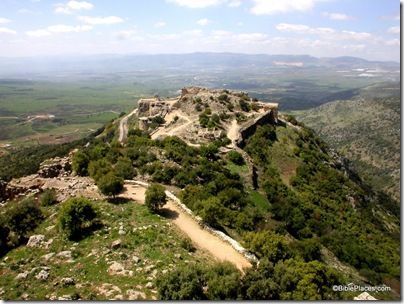If I ever made a list of best places to visit in Israel, the site that would probably take the award for “best place to explore” would be Nimrod’s Castle. Also known as Subeibeh and Banias Fortress, the castle on the slopes of Mount Hermon was long believed to be one of a string of Crusader castles found throughout the Levant. More recent archaeological investigation has determined that the fortress was built by the Ismali’is (c. 1130) and then expanded by Malik el-Aziz Uthman (c. 1230).
The Crusaders held the castle for a brief time, but they were not responsible for its initial construction or its later expansion.
Stephen Gabriel Rosenberg has written a good summary of the castle’s history and beauty in the Jerusalem Post this week.
The best way to tour the extensive castle is to follow a path along the walls, which passes all sixteen towers, each one bearing a different, elaborate, stonework design. At first glance, the architecture looks to be styled by the Crusaders, but further examination reveals that the arches do not bear the vintage pointed, gothic trademark, and the lintels over the doorways have double corbels and decorated relieving arches, which is typical Arab style. However, obvious similarities inevitably exist given that Muslim work is contemporary with that of the Crusaders, and the locals clearly absorbed some of the fine French designs of their enemies.
Of the sixteen towers, the large, semi-circular structure on the southern wall – appropriately dubbed, the “Beautiful Tower” – is of particular note. The massive central pier is asymmetrical and octagonal, and reconciles the outer semicircle, composed of five sides, to the inner rectangular plan of three sides. The vaults from the pier to the outside walls, although now partly destroyed, reflect the complicated curved surfaces that had to be cut in stone to achieve the precise reconciliation between the curved and rectangular layout of the tower.
Visiting the site with children can be enormously enjoyable, given the many strange and interesting staircases, as well as the stepped, “secret passage” which serves as an exit on the west end. The passage was either an elaborate postern or hidden pedestrian entrance, and was uncovered by the Israel Antiquities Authority in 1994. Some of the towers, as well as the keep, have retained their original stone roofing, and from there one can appreciate the extensive view over the deep, adjoining valleys of the Sa’ar and Guvta wadis. Those who launched attacks against the fortress from these low points must have either been intensely brave or profoundly insane.
The full article is here.
HT: Joe Lauer


